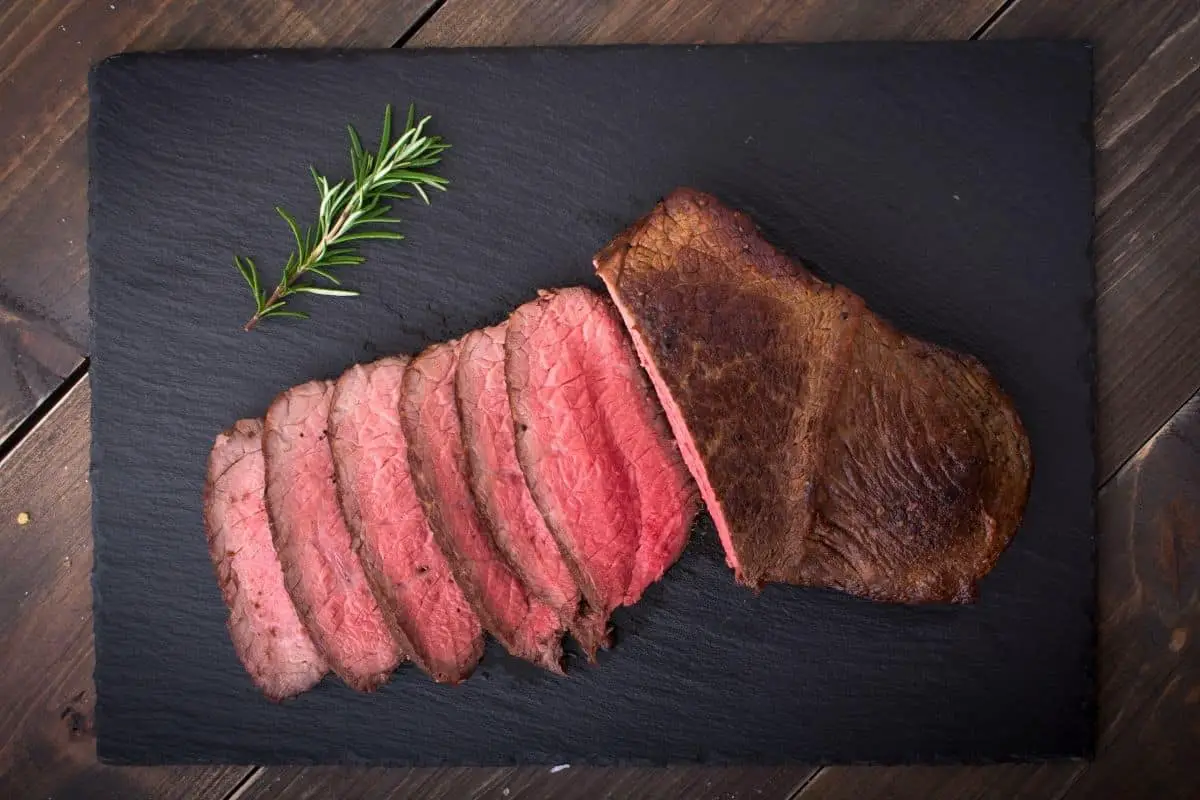This post contains affiliate links.
Dogs are naturally curious animals that love to sniff, explore and gobble up everything that comes their way. The habit of tasting everything to satisfy curiosity can get your four-legged family member into trouble, especially if he eats potentially risky plants like cacti. So what should you do in case your dog eats a cactus?
When your dog eats a cactus, you’ll need to examine his face, paws, fur, and other body parts to remove the spines and determine if they caused any injuries. Cacti are not poisonous to dogs, but the extent of injury should determine whether or not you contact a vet.
If you’re still reading, chances are your canine companion had an encounter with cacti that he sadly lost. Lucky for you (and your furry friend), this article addresses what pet parents need to do when their dogs eat cacti.
Table of Contents
Is a Cactus Poisonous for Dogs?
Most cacti aren’t poisonous when consumed by dogs. However, since it contains thick fibrous plant material, it can easily cause tummy problems and stress your pooch’s digestive system.
Some cacti are sprayed with insecticides, while others contain fertilizers. These chemicals can prove harmful to your dog’s system when consumed, which means there’s a slight probability that your dog can ingest harmful chemicals if he eats a cactus plant that’s regularly sprayed and fertilized.
Although not common, the sap of the cactus plant might lead to allergic reactions when consumed, especially if your dog has a sensitive tummy.
Therefore, the greatest danger with cacti is not the sap or the plant fiber but rather the sharp thorns that protrude as a protection mechanism. However, you should still examine the type of cactus to determine whether your dog had an encounter with a poisonous type.
Steps To Take When Your Dog Eats a Cactus
Below are some recommended steps to observe if your dog has an encounter with cacti and ends up injured.
Examine the Extent of Injury
You can’t do much to help your dog before determining the affected areas. As a good rule of thumb, observe your dog’s movement and behavior, checking for the injured parts, including his nose, ears, eyes, and entire face to determine whether he was pricked by the spikes.
Once you’re done examining the extent of facial injury, move to the rest of your dog’s body parts. Dr. Jennifer Freeman, a vet at Petsmart, insists that dogs should be handled with care and assessed phase by phase to determine the problem areas after an injury.
Therefore, you should allow your dog to walk (if he can) to determine the sensitive areas that might have been injured. Check all parts, including the tail, as doing so will ensure your dog is properly treated.
Remove the Spines
After an incident with your indoor or outdoor cactus plant, your dog is likely to come back with spines all over his body. In worse situations, your dog can even have spines lodged in his nose, tongue, neck, and entire fur.
You will need to remove the spines, ensuring that each is carefully removed from your dog’s skin. Please note that your dog might become extremely agitated during the spine-removal process, so you will need to handle him with care and extra patience.
When removing the spines, you’ll want to carefully look over where the spines are pulled out to determine the extent of the injury, because some spines might be lodged deeper than others. These areas might need extra attention after plucking off the spines.
You might want to immediately start removing the cactus spines, but it’s usually best to inspect the dog and determine the affected areas before pulling out any spines. This is because your dog might not cooperate during the spine removal process, especially if there’s one lodged extra deeply.
The process of removing cactus spines from your dog should be hygienic. Ideally, you should use well-sterilized tweezers to pluck out all the thorns. You shouldn’t attempt to remove the cactus spines without a helping hand, so call another family member or a friend to hold the dog in place as you remove the spines.
The importance of having an extra pair of hands cannot be overstated. While you might easily remove the thorn on your own, your dog will be uncomfortable and will therefore be fairly resistant. Having a friend or family member (preferably an adult) hold the dog will ensure he remains in place while you attempt to remove the spines.
Disinfect the Injured Parts
The job doesn’t end after plucking the spines out of your furry friend’s body. To reduce the chances of infection, it’s vital to have an antibiotic ointment on standby.
Add the antibiotic ointment to a bowl of clean water. Take a clean towel and soak it in the treated water before gently applying it to your dog’s injured parts. Ensure that you clean all the affected areas as it’s the best way to prevent infections and other reactions due to contamination.
Again, your dog will probably be resistant when you attempt to touch the injured parts, which means you’ll need to be patient and handle him with a lot of care. Having an extra pair of hands to hold your dog in place while cleaning up the wounds is highly recommended.
When To Contact a Vet After Your Dog Eats Cactus
Removing cactus spines from your dog’s face, tongue or body can be a truly daunting task. Not only is it painful for your dog, but it can also prove traumatizing for you, especially when you see your pooch whining in distress. If you doubt your capacity to remove the spines without aggravating your dog’s injury, then it’s best to contact a trusted vet.
Here’s when to reach out to an expert after your dog eats cactus:
Injuries in Sensitive Areas
If your dog has sustained serious injuries in sensitive areas like eyes and ears, then it’s best to leave the spine removal process to the experts, because you can easily exacerbate the eye injury and condemn your dog to permanent blindness in the process of spine removal.
Therefore, as mentioned earlier, the first step in treating injuries resulting from cactus bites should be examining the extent of the injury, which will allow you to determine whether or not you can remove the spines.
If you notice that the spikes are lodged in potentially sensitive areas or doubt your ability to do a thorough job, then you should rush your canine companion to the local vet for emergency treatment.
When Your Dog Is Uncooperative
When dealing with aggravated injuries, chances are your dog won’t cooperate as you attempt to remove the spines. He’ll try jumping, barking, pushing, or any other activity that will help keep you off his case.
In these situations, you shouldn’t force your dog into submission, as the pain might be too much for him to bear.
As a result, it is highly advisable to rush your dog to the vet if he shows signs of extreme discomfort whenever you attempt to pluck out the spines. Vet treatment in these situations is the recommended option as he’ll most likely get sedated and wake up to find the spines expertly removed.
If Your Dog Is Stressed and Panicking After Removing the Cactus Spines
It’s normal for your dog to become unsettled after a cacti-spine removal process until he sleeps it off and forgets about the ordeal. However, if you notice your pup acting weird several hours after removing the spines, chances are the pain might be too severe for him to handle.
Check for symptoms like persistent barking, limping, low moods, poor appetite, and lethargy. If these symptoms fail to go away several hours or even days after the initial home treatment, then taking him for a consultation at the vet might be the ideal option.
You’ll want to watch for any behavioral changes after removing the cactus spines from your dog.
Appetite Changes and Mealtime Struggles
There’s a huge probability that your dog will struggle during mealtime, especially if the cactus spines got lodged deep in his tongue. If the injuries become too severe and start affecting his feeding patterns and appetite, then you’ll need to consult with the vet.
Your dog might require a diet change as he recovers from the tongue injury. While it’s okay to modify the diet independently, talking to your local vet might help you know the right diet alteration. They will most probably prescribe medication that will help speed up your dog’s recovery.
However, if you determine that your dog has a severely injured tongue due to eating cacti, it’s best to refrain from giving him solid foods until he sees a vet. This means you’ll need to act fast to avoid starving your canine companion.
What to Remember When Removing Cactus Spines From Your Dog
You don’t need to have vet-like expertise to remove cactus spines from your dog. And while it’s best to leave the cactus spine-removal task to experienced vets, you can remove the lightly lodged ones by observing the following tips.
Use a Coarse Comb
A coarse comb can come in handy when removing spines that are loosely lodged on your dog’s coat. Try as much as you can to brush in the direction of how the fur grows, but remember to brush gently to avoid hurting your dog further.
Avoid Using Your Bare Hands
The last thing you want to do is use your bare hands to remove cactus spines as you can also get injured or, even worse, introduce harmful bacteria to the wound. Try using tweezers or forceps to remove the spines, especially the deeply lodged ones.
Again, it’s highly advisable to remove the spines in the direction of your dog’s fur. Remember to disinfect the tweezers after removing the spines to avoid infecting the wounds.
Clean Off Blood That Comes Out
It’s highly likely that your dog will bleed as you continue to remove the deeply lodged cactus spines. Since you’ll need to maintain top levels of hygiene, cleaning off the blood and disinfecting the affected areas before moving to other parts is highly recommended.
Always Have an Extra Pair of Hands
Your dog won’t enjoy the spine removal process, and he’ll prove it by being uncooperative, especially as you continue to pull out the spines. As a result, you might want to call for support, either from a family member or a friend, to help you hold the dog in place.
Why Do Dogs Eat Cacti?
Dogs are naturally curious explorers and love to sniff and get their noses in almost anything that appears strange or unique. A cactus ticks all the boxes for dogs as it has a unique appearance characterized by its thorns.
The succulent, fleshy nature of a cactus, coupled with its spiky, extra sharp thorns means it’s likely to attract the attention of your dog, especially if you recently added a cactus to your home, indoors or outdoors.
Besides curiosity, dogs love to eat plants, since, after all, they are omnivorous.
At first sight, a cactus might appear like a filling meal due to its fleshy leaves. But as your furry friend will likely find out the hard way, cacti are one of those plants that should be avoided at all costs.
While the odds of your dog eating cactus aren’t too high, chances are he might want to get a taste of the plant if he crosses paths with it for the first time. As a result, you’ll need to be extra careful when adding cacti to your backyard or indoor setup as they can cause serious injuries to your furry friend.
Since some breeds love chewing almost everything they come across, it’s important to train your dog as chewing a cactus aggressively can lead to fatal outcomes. Dogs with dental infections and parasites are notorious for chewing items, meaning an untreated dog might chew on cactus as a way to soothe himself.
Final Takeaway
As naturally curious pets, it’s common for dogs to have encounters with cacti, especially when they spot the strange-appearing plants for the first time. While the fleshy part won’t do much damage to your dog, the same can’t be said about the sharp-edged cactus spines.
The right steps to take after your dog eats a cactus should depend on the extent of the injury. For severe injuries, it’s always best to take your dog to the vet for further assistance. However, you can remove the loose spines on the coat by using a coarse brush.
Related Articles
- Can a Dog Eat Teriyaki? Is It Safe?
- Can Dogs Eat Animal Crackers? (Is It Safe)
- Can Dogs Eat Artichokes? (We Ask the Experts)
- Can Dogs Eat Asparagus? (We Asked the Experts)
- Can Dogs Eat Basil? Here’s What the Expert Says
Sources
- Cactus Way: Are Cactus Plants Poisonous to Dogs? Things to Know about Cactus and Dogs
- Gallant: Helping a Dog After a Run-In With a Cactus
- The Spruce Pets: How to Treat Plant Poisoning in Puppies
- Wag Walking: Pencil Cactus Poisoning in Dogs – Symptoms, Causes, Diagnosis, Treatment, Recovery, Management, Cost
- Our Fit Pets: My Dog Ate a Cactus What Should I Do?
Mrdogfood.com is a participant in the Amazon Services LLC Associates Program, an affiliate advertising program designed to provide a means for sites to earn advertising fees by advertising and linking to Amazon.com. We also participate in other affiliate programs which compensate us for referring traffic.








